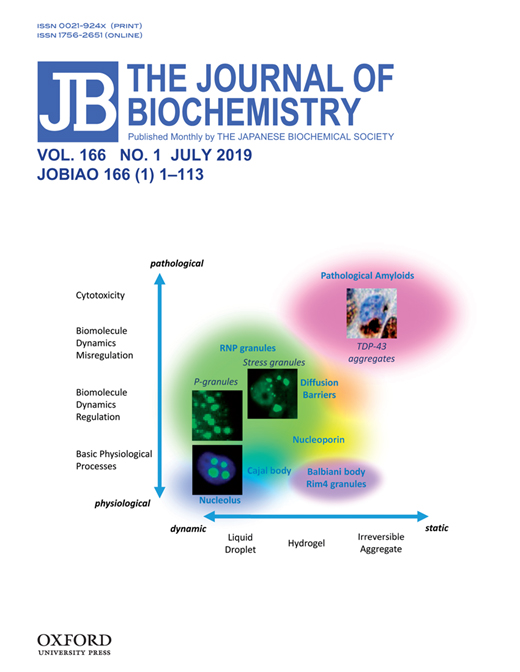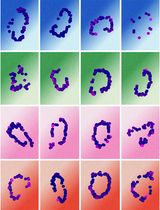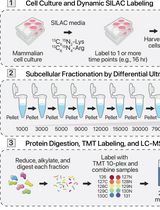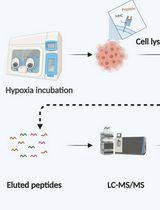- EN - English
- CN - 中文
Fibrin Breakdown Assay
纤维蛋白分解检测
发布: 2020年04月20日第10卷第8期 DOI: 10.21769/BioProtoc.3585 浏览次数: 5110
评审: Antoine de MorreeStéphane RomeroSurabhi Sonam
Abstract
Fibrinolysis is an integral part of the matrix remodeling process that contributes to tissue repair. Fibrin clots are broken down during fibrinolysis in a controlled process. Fibrin degradation products (FDPs) have also been shown to have a role in the regulation of cell growth and are implicated in various vascular diseases. This protocol was designed to quantitatively measure the extent of fibrin breakdown and how this can be adapted as a tool to further investigate the pathway involved in fibrinolysis or fibrin degradation products. Until now, we haven’t found an alternative method to analysis fibrinolysis.
Keywords: Fibrin (纤维蛋白)Background
In hemostasis, fibrin plays a crucial role as both the ultimate substrate for fibrinolysis and the primary product of the coagulation cascade (Cesarman-Maus and Hajjar, 2005; Chapin and Hajjar, 2015). In addition, fibrin has been found to mediate the acute inflammatory response to implanted biomaterials and it has been suggested that fibrin plays a prominent role in leukocyte transmigration and thereby inflammation (Yakovlev and Medved, 2018). Fibrinolysis is a tightly regulated process by which a fibrin-rich thrombus is formed and degraded, to prevent blood clots from growing (Amengual and Atsumi, 2016) and to contribute to tissue repair (Houslay et al., 2019). In Fibrinolysis, a fibrin clot (the product of coagulation) is broken down. Fibrin degradation products (FDPs), fibrous proteins that act as mitogenic factors, can promote the proliferation of endothelial cells, smooth muscle cells and fibroblasts, and cholesterol deposition (Dong et al., 2017). Numerous studies have shown that FDPs are involved in various vascular diseases. For example, FDPs induce the adhesion and gathering of leucocytes, damaging blood vessel endothelium (Dong et al., 2017). Also, FDPs have been approved that have diverse effects in inflammatory processes and acute phase responses, such as activating TLR-4 and integrin and cell adhesionor migration (Schuliga, 2015). They inhibit several neutrophil functions crucial to the bactericidal role of these inflammatory cells (Gerdin et al., 1980). It is vital that a more complete understanding of the mechanisms behind the FDPs formation and related pathway is gained. In sight of this, we present an assay called the Fibrin breakdown assay to use in laboratory research. This assay is designed to measure the extent of fibrin degradation quantitatively. Until now, we have found no alternative method to analysis fibrinolysis.
Materials and Reagents
- 24-well cell culture plates (Corning®, catalog number: 3524-SLS )
- TC Dish 100 mm (Corning®, catalog number: 430167-SLS )
- TC Plate 6-well (Corning®, catalog number: 3516-SLS )
- 50 ml Falcon tube
- 12-well plate
- NIH3T3 cells: fibroblasts from Swiss mouse embryo tissue with the ‘3T3’ designation referring to the abbreviation of “3-day transfer, inoculum 3 x 105 cells”
- Mouse embryonic Fibroblast (MEF) cells: isolated from the bodies of c57 black mouse embryos
- Dulbecco’s modified Eagle’s medium (500 ml) DMEM HIGH GUCOSE no glutamine/sod.pyruvate (Sigma-Aldrich, catalog number: D5671 )
- Phosphate Buffered Saline (PBS) 1 tablet/200 ml (Sigma-Aldrich, catalog number: P4417-100TAB )
- Trypsin EDTA (1x) (Gibco, catalog number: 15400-054 )
- Thrombin (Sigma-Aldrich, catalog number: 10602400001 )
- Factor XIII (Sigma-Aldrich, catalog number: 233501-100UG-M )
- Fibrinogen (Sigma-Aldrich, catalog number: F3879-100MG )
- Na-citrate (Sigma-Aldrich, catalog number: 234265-100G )
- Sodium chloride (VWR CHEMICALS, catalog number: 27810.295P )
- Plasminogen (Sigma-Aldrich, catalog number: P7999-5UN )
- Newborn Calf Serum (NCS) (Sigma-Aldrich, catalog number: 12023C-500ML )
- Penicillin/Streptomycin (Sigma-Aldrich, catalog number: P0781-100ML )
- L-glutamine (Sigma-Aldrich, catalog number: G7513-100ML )
- Complete Dulbecco’s modified Eagle’s medium (DMEM) (see Recipes)
- Fibrin Matrices (see Recipes)
Equipment
- TC Flasks 150 cm vented (Corning®, catalog number: CLS430825-50EA )
- Analytical Balance (Sartorius, catalog number: CP124S )
- Phase contrast microscope (Zeiss)
- Cell culture incubator (Thermo Scientific Heraeus®)
- Centrifuge (MSE Mistral 1000)
Software
- GraphPad Prism 7 (GraphPad, https://www.graphpad.com/)
- Excel (Microsoft, https://www.microsoft.com/en-ca/)
- ImageJ bundled with 64-bit Java 1.8.0 (NIH, https://imagej.nih.gov/ij/)
Procedure
文章信息
版权信息
© 2020 The Authors; exclusive licensee Bio-protocol LLC.
如何引用
Ling, J., Blair, C. M. and Baillie, G. S. (2020). Fibrin Breakdown Assay. Bio-protocol 10(8): e3585. DOI: 10.21769/BioProtoc.3585.
分类
生物化学 > 蛋白质 > 降解
生物化学 > 蛋白质 > 定量
细胞生物学 > 基于细胞的分析方法 > 酶学测定
您对这篇实验方法有问题吗?
在此处发布您的问题,我们将邀请本文作者来回答。同时,我们会将您的问题发布到Bio-protocol Exchange,以便寻求社区成员的帮助。
提问指南
+ 问题描述
写下详细的问题描述,包括所有有助于他人回答您问题的信息(例如实验过程、条件和相关图像等)。
Share
Bluesky
X
Copy link












